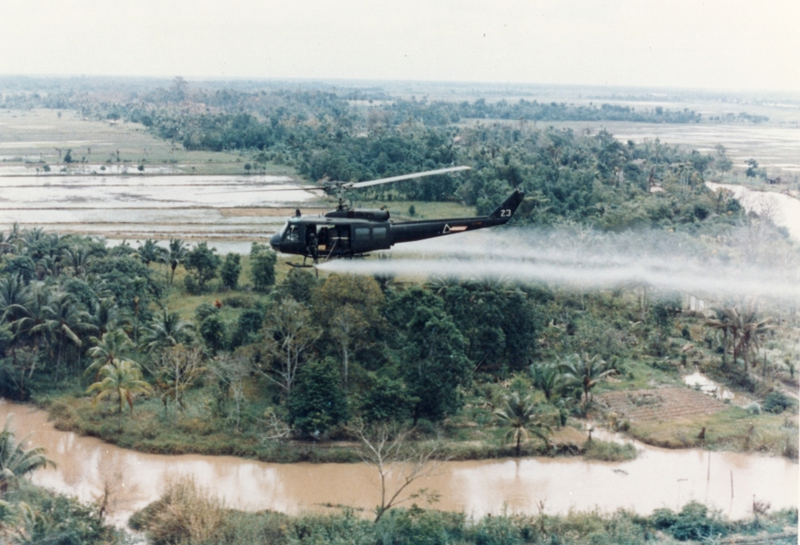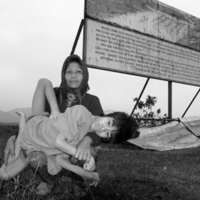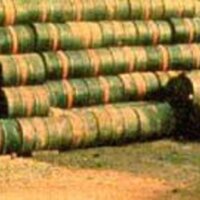Operation Ranch Hand and Agent Orange
By Anna Vogel
In 1962, the United States initiated Operation Ranch Hand. This authorized the American military to utilize chemical agents such as Agent Orange to wage herbicidal warfare in Vietnam. Agent Orange belonged to a larger group of “Rainbow Herbicides” that included others such as Agents Blue and Yellow. Officials named each one according to the color of the barrel they used to deliver it to Vietnam. The Monsanto Companycreated Agent Orange prior to the Vietnam War as governments in the US, Germany, and England sought to increase agricultural productivity. It wasn’t until World War II and the Vietnam War when the US government studied herbicides that the Department of Defense considered Agent Orange as a potential military weapon.
Agent Orange is made up of 50% n-butyl ester of 2,4-D and 50% n-butyl ester of 2,4,5-T, a lethal amount of dioxins. The United States was aware of the potential for damage the Agents of Operation Ranch Hand (and the larger initiative Operation Trail Dust) had due to dioxin contamination when Operation Ranch Hand was initiated. The US military sprayed Agent Orange over thousands of Vietnamese villages, an amount which exceeded that sprayed for agricultural purposes in the United States. The chemicals of Agent Orange left lasting effects on the environment and people who were exposed to it, as the chemicals have a half life of 100 years. After sprays, the chemical contents seeped into local streams, lakes, and soil. Researchers have linked Agent Orange to various medical conditions such as birth defects, cancers, liver damage, parkinsons, and heart diseases, but researchers remain clear about Agent Orange’s potential effects.
The US Government started an Agent Orange Settlement Fund through the Veterans Affairs to provide Veterans and their families who have been affected with compensation averaging around $3,800. There have also been various efforts through the Vietnamese Ministry of Labor, War Invalids and Society, and The Red Cross to help Vietnamese who have been affected by the toxins. Mrs. Hông a resident of Biên Hòa, one of the areas highly contaminated from runoff speaks about the effects of Agent Orange in the book Looking Back on the Vietnam War: Twenty-first-Century Perspectives Hông states “In ’92 there was a medical program, and after the check-up I discovered that I had internal illnesses. Well, the first disease that was discovered was my liver . . . our government took care of me and then complications set in with my spleen—it was inflamed, contaminated, and it turned out they cut it out.” She developed stomach ulcers and myelitis, then troubles with her entire digestive tract, high blood pressure, and a condition that caused her feet to turn pale from time to time. She had lost the hearing in one ear due to the explosions of bombs and artillery, and her vision was now blurry.
The US banned Agent Orange in 1971 and all remaining stocks were taken by the US Government to a remote US-controlled island around 700 miles south-east of Hawaii and destroyed.
Further readings:
- Frey, R. Scott. “Agent Orange and America at War in Vietnam and Southeast Asia.” Human Ecology Review 20, no. 1 (2013): 1–10.
- Boyle, Brenda M. and Jeehyun Lim. Looking Back on the Vietnam War: Twenty-First-Century Perspectives. New Brunswick: Rutgers University Press, 2016.
- “Addressing the Harmful Legacy of Agent Orange in Vietnam.” United States Institute of Peace.
- “A Toxic Legacy: The Generational Effects of Agent Orange.” 2020. Know a Vet. October 7, 2020.





